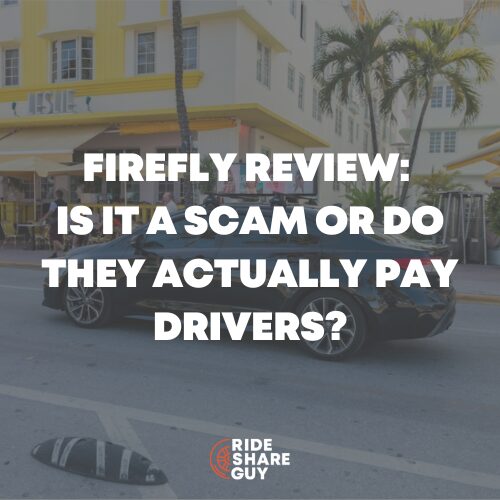Driving for Uber and Lyft isn’t for everyone, but what other jobs (besides being a taxi driver) are out there for people who like to drive, but don’t necessarily want a chatty passenger (or smelly food) in their car? That answer might be trucking. Contributor Jon Knope covers what it’s like to get started as a truck driver, how much truckers can make, and how you can get started in the industry. This is the first of two articles on truck driving – let us know what you think in the comments!
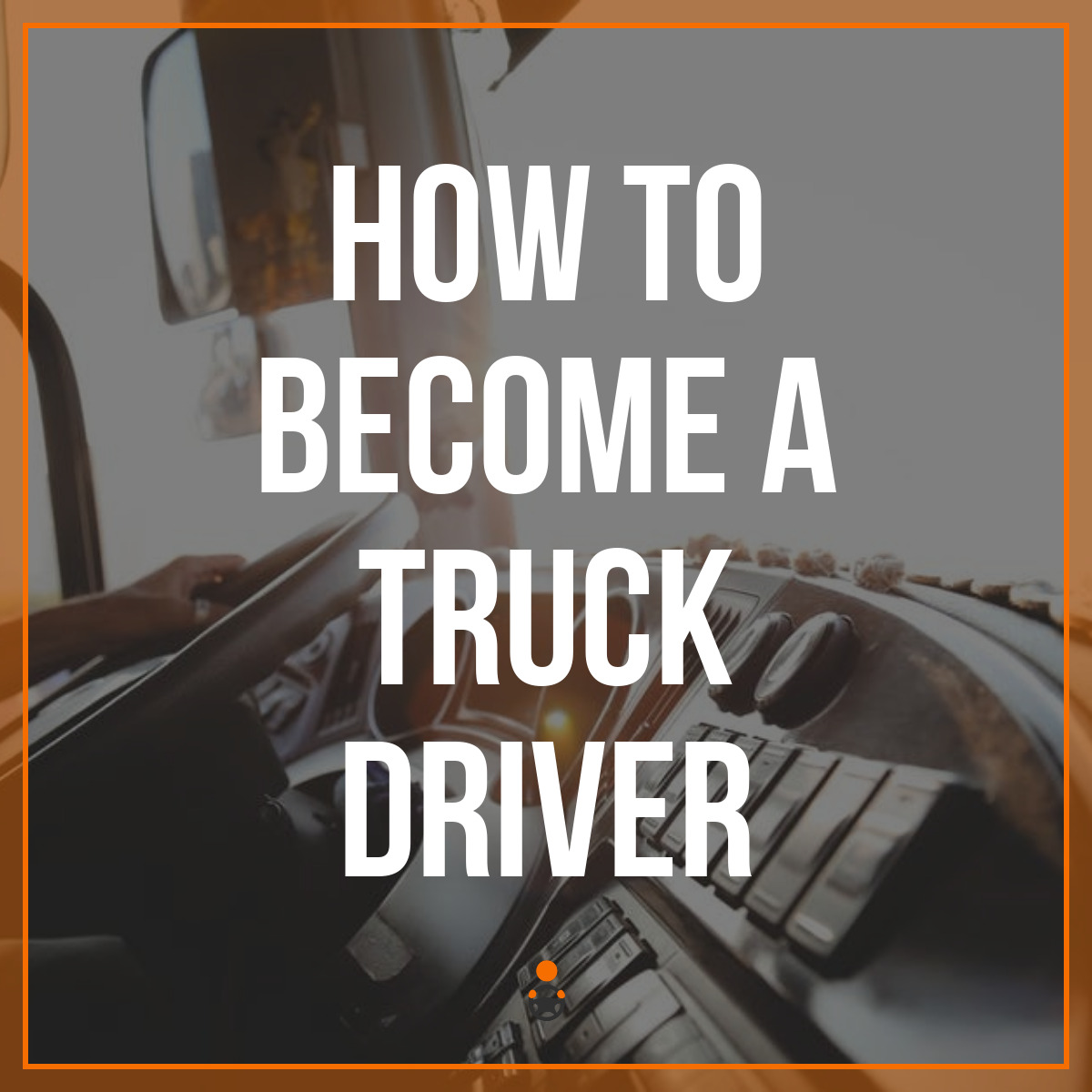
Ever wished you could turn driving into a good old-fashioned career, complete with livable wages, health insurance, paid vacations, and a 401(k)? It turns out you can – but you’ll have to think big.
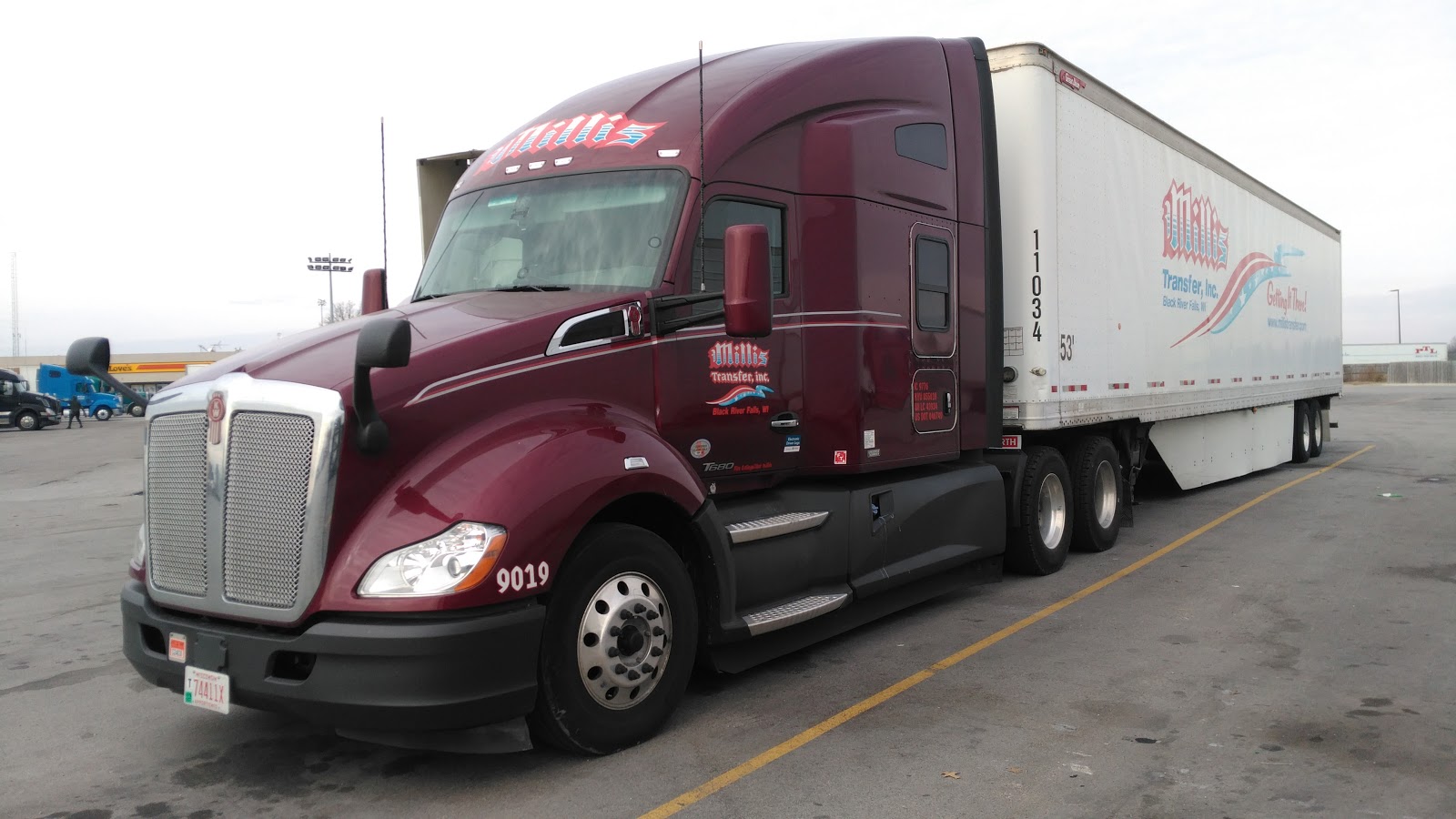
With self-driving tech perpetually ten more years away, and no signs of slowdown for online retail, demand for American truck drivers is at an all-time high. Analysts say the industry is 60,000 drivers short, and they expect that number to triple by 2026. That shortage is due, at least in part, to the many hurdles one must clear in order to become a trucker in the first place.
In this article, I’ll share how I got started in the trucking business and made $50k in my first year on the road.
What You’ll Need to Become a Truck Driver
Trucking isn’t the most discerning industry, but they’re definitely pickier than most rideshare companies. Here’s what it takes to get a foot in the door and become a truck driver:
1. Time
Obtaining a commercial drivers license (CDL) can take anywhere from several weeks to several months, depending on how you go about it. You’ll also need to be over 21 years old when you start the process. Once you get a CDL, most trucking jobs require you to live out of the truck – perhaps for a few days a week, or perhaps for a few weeks at a time. Jobs with the least home time are the most readily available, so unless you’ve got some insider connections, expect to be gone for around 26 days per month during your first year of driving.
2. A clean (ish) record
You don’t need a perfect record, but it helps – a lot. Recent DUIs, felony charges, and certain at-fault accidents or tickets may get you rejected by some companies, while other trucking outfits might be more lenient. It all depends on where you’re applying (and how desperate they are for drivers).
3. Determination
Trucking is more than a job – it’s a lifestyle, and it can be lonely. Unless you’re driving as part of a team, you’ll be working, eating, and sleeping alone every day, with only the odd weekend to enjoy life as a member of normal human society. You’ll also need to be able to stay alert for up to 14 hours each day on a (sometimes wildly) fluctuating sleep schedule.
4. Health and Sobriety
To get your learners permit, you’ll need a DOT physical exam, which includes hearing and vision checks and a blood pressure test. You’ll also need your sobriety. The DOT requires that trucking companies perform pre-employment, post-accident, and random urine tests, with more demanding companies even taking hair samples to find drug use from several months prior. As for booze, it’s best to avoid it entirely. It’s technically a DUI to be “in control of” the truck with a BAC of over 0.02, even while sleeping.
5. Money
CDL training isn’t free – you’ll need at least a little spending power. The good news is that the cost of entry is super low compared to other trades. I was able to get my CDL and start collecting my first paychecks with less than $500 – not including a few weeks’ worth of dinners during training.
Training to Become a Truck Driver: School or Company?
There’s more than one way to learn how to drive a truck – in fact, there are two ways. You can learn to drive through a school, such as a community college or a standalone CDL training course, or you can go through a company training program and graduate directly into your first trucking job.
I chose the latter option, but neither is necessarily better or worse than the other – it just depends on your personal needs and goals. There are good and bad training programs in both categories, so above all, do your research and seek out feedback from people who have been through the program you’re considering. The overview below is a sweeping generalization – you may find exceptions!
Trucking Schools
Pros:
Multiple job offers. Because the industry is hungry for workers, recruiters will likely start pursuing you well before you graduate.
More scheduling options. You may be able to attend truck school part-time and still hold down another job during your transition
Cons:
More expensive up front. Truck school costs money – although you might be able to get a payment plan. Some companies offer tuition reimbursement when they hire you.
Slower. It may take longer to start making money (see below).
No experience. You’ll graduate with a CDL, but you won’t have many hours behind the wheel. Your job opportunities will be limited to companies that hire folks right out of school. Most companies stick you in a truck with a trainer for a few weeks to make sure you know what you’re doing before assigning you a solo truck.
Company Training
Pros:
Get paid ASAP. Trucking companies are invested in getting you on the road efficiently. Many companies promise that you’ll be working on your first paycheck less than a month after starting the program.
Low upfront cost. Tuition at company training programs is typically cheaper than school training, and most companies offer deferred tuition payments that simply get deducted from your future paychecks. Watch out, though – if you decide to leave the company early, you’ll be on the hook for the remaining tuition.
Cons:
Can’t go job hunting right away. The company that trained you will do everything they can to hold onto you for a while – usually 6 months to a year. They may do this by deducting your tuition very slowly, so you’ll be on the hook for a substantial sum if you leave before paying it off. They may also tempt you with loyalty bonuses.
May have knowledge gaps. Training on company equipment may give you certain knowledge gaps. For example, my company trained us using trucks equipped with automatic transmissions. That put a restriction on my CDL, so I’m not allowed to operate manual transmissions unless I retake the whole test with a manual truck.
Getting Your Commercial Learner’s Permit
Just like a regular license, you’ve got to get a commercial learner’s permit before you can get a full commercial license. Most schools and training programs require you to get your permit before they accept you. To do this, you’ll have to take three multiple choice tests on the computer at your local drivers license office. While not overly difficult, you will need to study your state’s CDL manual (available free online) in order to pass – and make a quick trip to the doctor.
DOT Medical Card
This document shows you’re healthy enough to not pass out behind the wheel. You’ll have to present it before taking your permit tests. Getting one costs between $30 and $100, depending on where you go – I got mine done at a chiropractor’s office.
The physical is very basic: They’ll ask about your medical history, check your vision and hearing, and test your blood pressure. You have to renew the card (and retake the physical) every two years – or more frequently if you have high blood pressure.
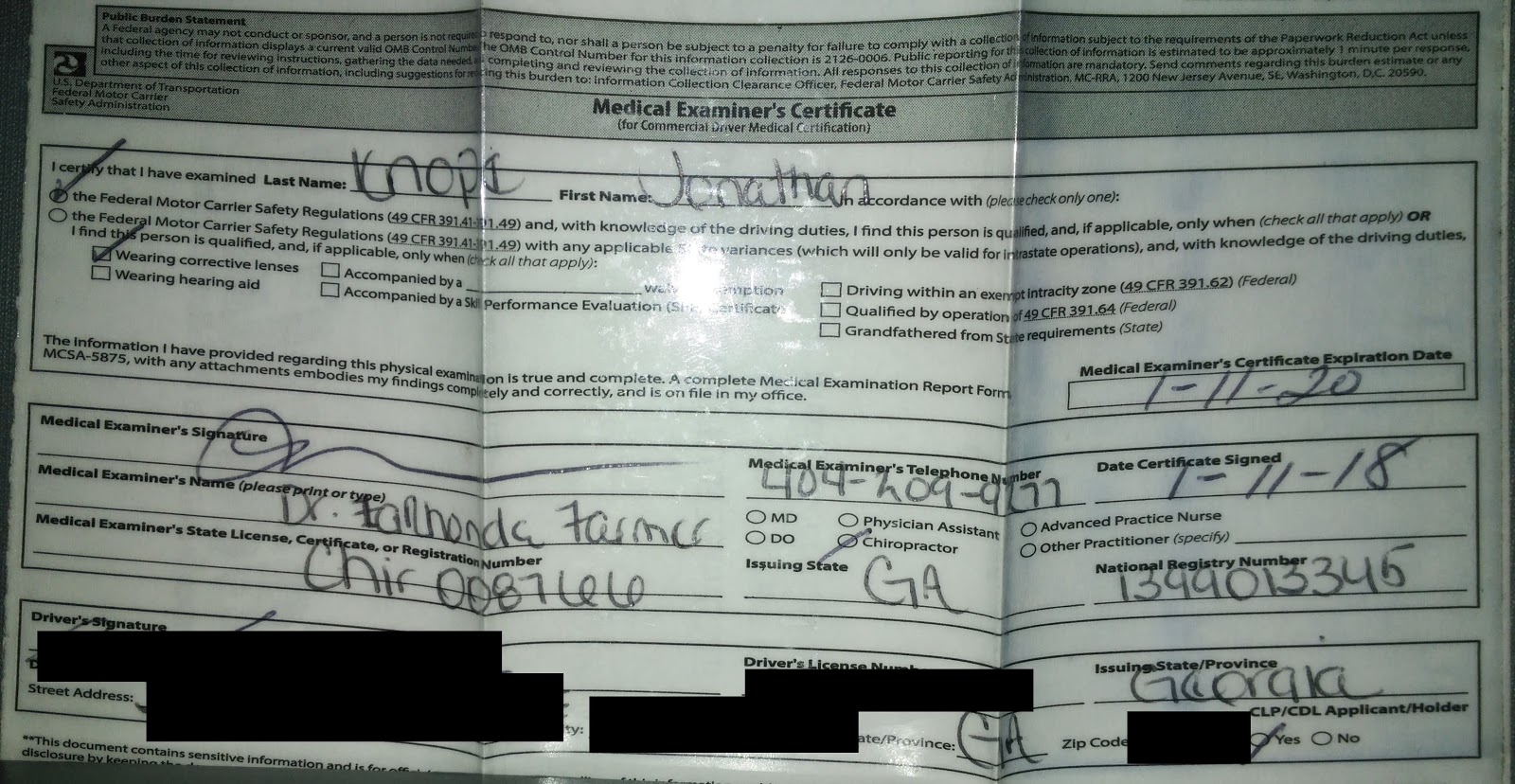
General Knowledge Test
This test covers the basics of driving a big commercial vehicle. It’s the longest of the three.
Air Brakes Test
Most commercial vehicles have air brakes, which operate using a pressurized air system. Brakes are pretty important, so this test makes sure you know how they work – and how to tell if they’re not working.
Combination Vehicles Test
There are two parts to your average big rig – the tractor and the trailer – which means it falls under the category of “combination vehicle.” You’ll have to answer questions about pulling double and triple trailers, too.
Millis Transfer: My Experience
This is not sponsored content – in fact I didn’t even tell Millis I was writing it. In the interest of full disclosure, I do get cash for referrals, but I strongly encourage you to research all the options and find what works best for you.
Millis Transfer is based in Wisconsin, and unlike some companies that run all 48 states, Millis only runs the Midwest, the East Coast, and Texas. They offer training programs at their terminals in Wisconsin, Ohio, Texas, North Carolina, and Georgia. After submitting my application, passing their background and MVR checks, and taking a quick phone interview, I was accepted into the training program.
The training costs $2500: $500 upfront to prove you mean business, and the remainder deducted from your paycheck at $30/week for about a year. The initial program lasts three weeks. During this time, I shared a hotel room with a fellow student. The hotel we got was pretty nice (Country Inn and Suites, complete with indoor pool). Hot breakfast was available every morning, and Millis paid for our lunch – usually fast food, but still better than nothing.
Learning the Basics
On the first day of class, 7 or 8 fellow students and I met one another outside the hotel lobby just before dawn, wondering what we had gotten ourselves into. Eventually a big passenger van showed up to transport us to the terminal, driven by none other than Big Steve. After signing a bunch of documents and going on an excursion to take our drug test, it was time to get down to business.
Class ran from 7 am to around 4 pm Monday through Friday. The first week, we hung out in a classroom at the terminal while Big Steve explained the basics – a mixture of cautionary tales, explanations of the absurdly convoluted DOT Hours of Service Regulations, and rehashed material from the state CDL manual. By the end of the week, we were out on the yard, doing the “Millis 500” – laps around the terminal to get used to how the tractor handles.
The second week, Big Steve split the class into two halves. Half the class went on the road, taking turns driving with a trailer for a couple hours at a time in various traffic conditions. The rest of us hit the backing range with Big Steve’s assistant, Cornbread. Contrary to what you might imagine, I assure you I have not changed any names.
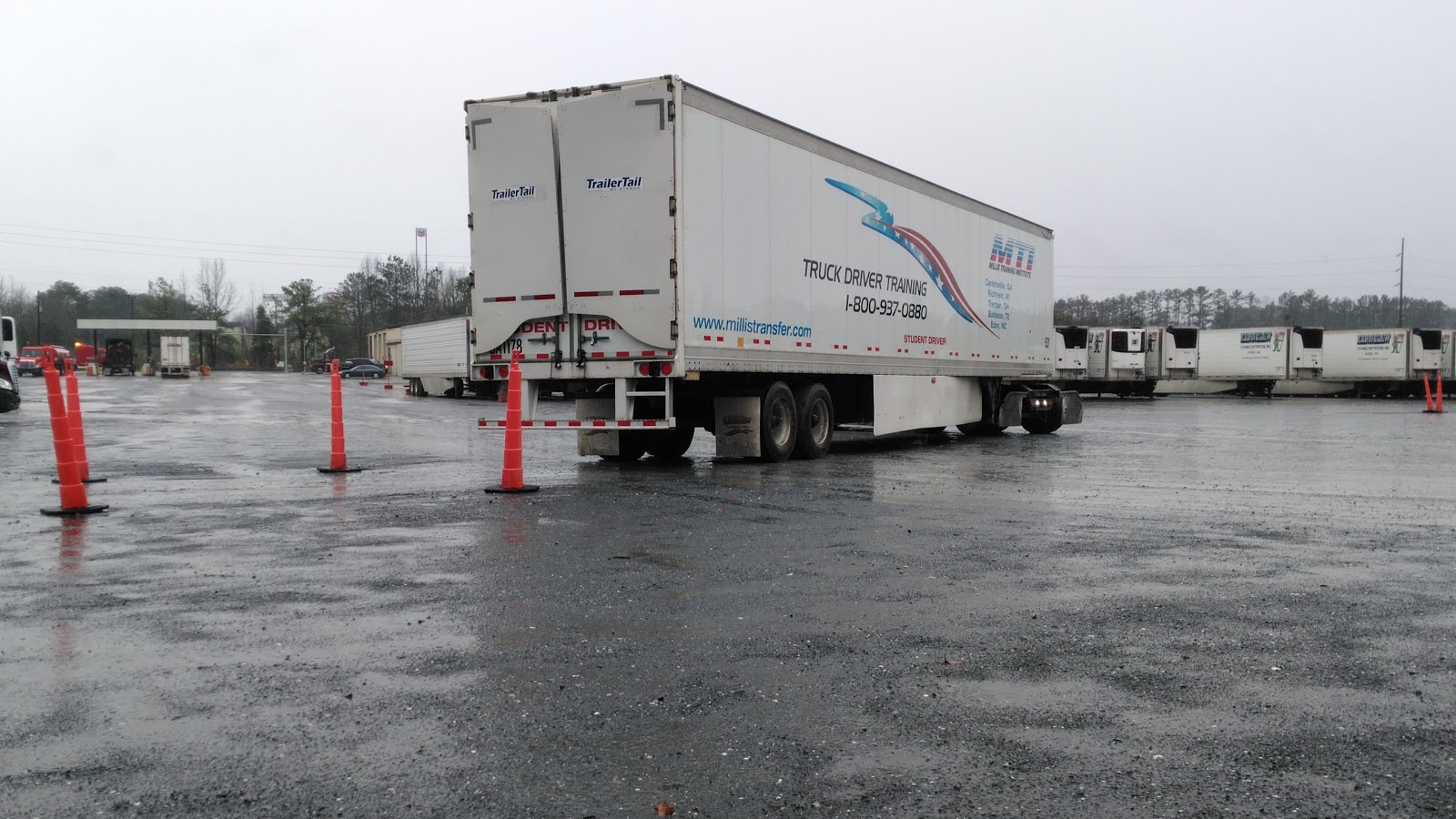
The range is set up with traffic cones to simulate the CDL test and allow you to practice the required backing maneuvers. If you’ve never tried backing a trailer, it’s extraordinarily difficult. In spite of Cornbread’s best efforts to explain the techniques, it took me months of real world driving before I felt comfortable with it. During that first week of practice, many cones were harmed. The week following, we switched places and put some road miles on the truck with Big Steve.
Training on the Road
Following the three week learning period, each student got paired with a trainer. Millis made some attempt to make sure the pairings were compatible, personality-wise – and this was appreciated. Student and trainer live together in one truck for 15,000 miles (about 6 weeks), which is an excruciatingly long time to be sharing less than 100 square feet of space with a stranger.
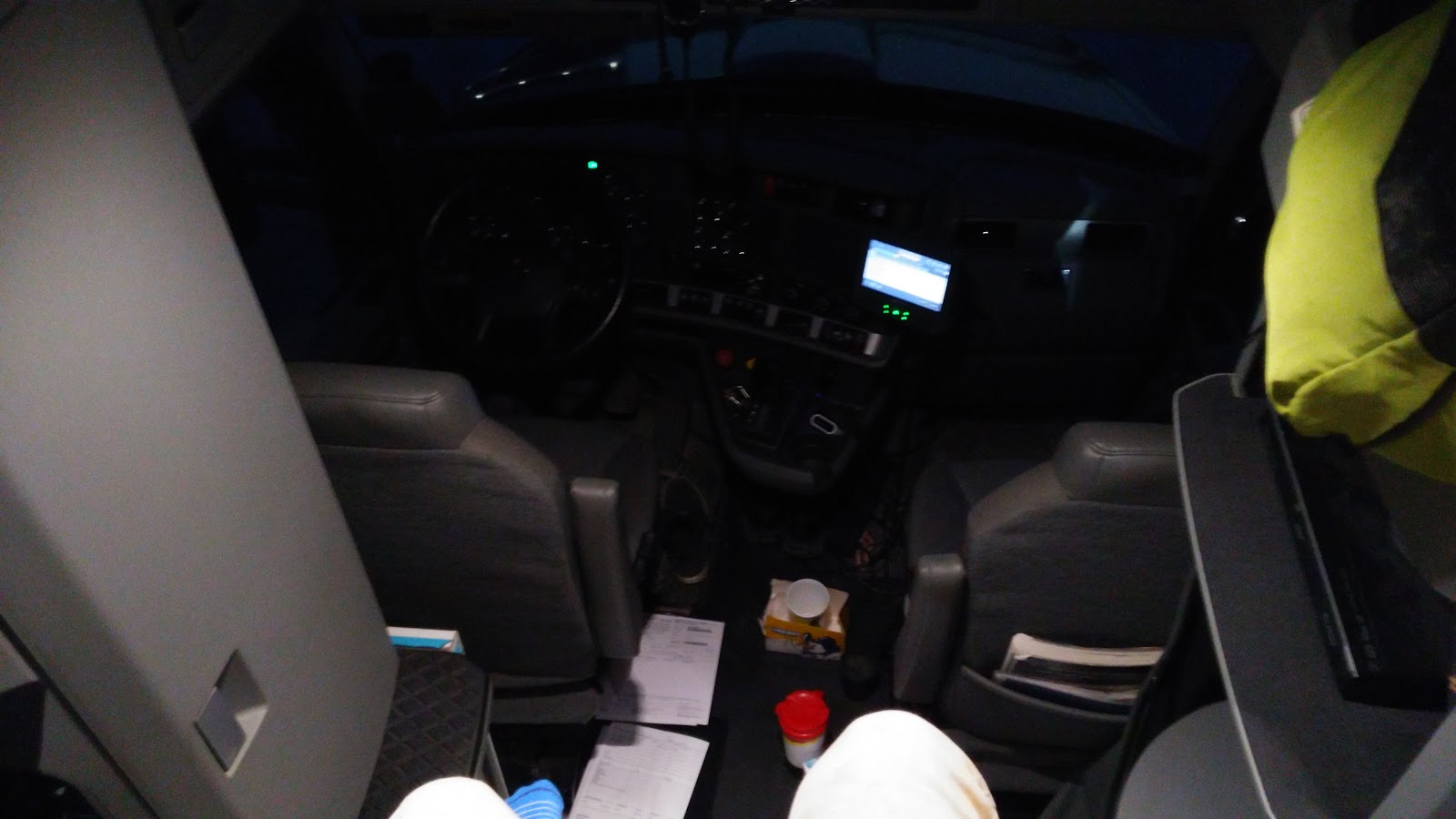
During this time, we hauled real freight to real customers. I got paid the full starting rate ($0.42/mi at the time) for every mile, regardless of who was driving – although 95% of the time it was me.
Most drivers average about 2500+ miles per week, which amounts to a pretty respectable wage – often about $1k per week – and get paid every Tuesday. My trainer, Brian, helped soothe my fear of backing during this time and pointed out when I was about to miss an exit or tear off a fender, which at first was alarmingly often. Towards the end of our 6 weeks together, dispatch made time for us to visit a CDL testing facility, where I could take the final test.
The CDL Test – Final Step to Become a Truck Driver
This is the last step to becoming a full-fledged truck driver, and there are three parts: the pre-trip inspection test, the backing test, and the road test. The pre-trip inspection involves pointing to every component of the truck and describing to the examiner what you’re inspecting. There are a lot of components. Most people consider this portion the most difficult. Fortunately, you’ll have the whole truck in front of you during the test, and the visual aid helps to jog your memory.
Next is the backing test. You’ll have to perform a straight back, an offset (moving the truck one space over), an alley dock (backing from a perpendicular position), and sometimes, a parallel park. For each maneuver, you get two pull ups to readjust the truck and trailer. Points are deducted for excess pull ups (and fallen cones).
The road test is the easiest portion. As long as you’re following all the laws, paying attention to all the street signs, and checking your mirrors every 5 seconds, you’ll be set.
Now What?
After I passed my CDL test and finished my 15,000 training miles with Brian, I was given one last perfunctory road test with Big Steve, followed by the keys to my very own assigned truck. As a company driver, it’s all paid for: Company credit card for fuel, in-house mechanics for repairs, and corporate accounts with roadside assistance services. Food is currently my biggest expense.
Those first few weeks of driving solo are extremely intimidating, and I had several moments of sheer panic while I continued to learn the importance of trip planning. Few things are scarier than approaching a ‘Clearance: 12’ 10”’ sign in a vehicle that’s 13’ 6.” But that’s a tale for my next write-up – What It’s Like to be a Trucker! If you’ve read this far, be sure to check that article out (coming soon) too – I discuss pay structures, life on the road, career prospects, and more. Until then, feel free to leave a comment with your questions, concerns, or corrections. Talk to you soon!
Readers, what questions do you have for Jon about driving a truck?
You can also keep up with Jon over at www.truckingseriously.com
-Jon @ RSG




